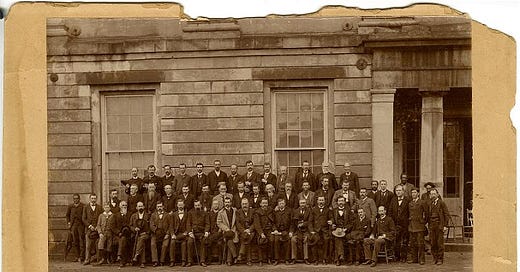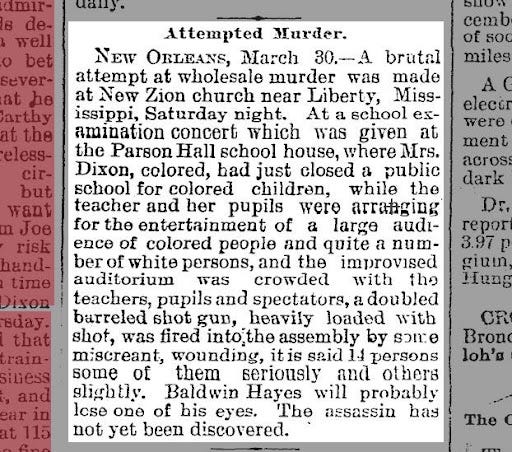After the Civil War, the dipshit bigots in charge of Mississippi had two big problems: 1) The state’s 1868 constitution would now give Black men the right to vote and 2) Black people were 55% of Mississippi’s population. Soon Black men were not only going to the polls, they were running for office and they were winning.
You will be shocked out of your mind to learn that those Mississippi dipshit bigots did not respond to this change with a shift in philosophy. No, instead, their answer was near-constant mass violence. White supremacist terror groups formed. Mass murders, assassinations and lynchings became commonplace and eventually, white supremacists gained back political control of Mississippi. In November of 1890, a new state constitution was adopted, restricting Black voting, instituting segregation and affirming a culture of white-on-Black violence. Four months later, in March of 1891, near the town of Liberty, MS, the US experienced its first mass shooting.
Now, usually, when this attack gets brought up, no one mentions its historical context. It exists in a separate category of “mass shooting” or, because of where it took place, a “school shooting”. But it is clear why this shooting occurred from its context and what was reported at the time:
Unless white supremacists announce their motives while exclusively targeting victims of color, this country has a very difficult time acknowledging the intent. Entitlement to violence for the sake of white supremacy is fundamental to the premise. The identity of the victim is secondary, if it matters at all. There are countless examples of white-on-white violence in the name of white supremacy that we all know, but we never quite make the connection. The Civil War is probably the most obvious example.
Even though Timothy McVeigh had a reputation as a racist, connections to white supremacist groups – including membership in the KKK – and even though his obsession with a white supremacist novel inspired his bombing of the Oklahoma City federal building, our cultural memory of McVeigh has nothing to do with white supremacy. Instead, he falls into the vague and neutral category of “domestic terrorist,” his motives never more specific than “anti-government”.
A problem can’t be solved until it’s identified. This can be the most difficult part, even when it’s incredibly obvious. Sometimes this difficulty is because of our own inability to see what’s right in front of us. In many cases, however, it might just be because so many cops are connected to white supremacist hate groups and they’re unlikely to tell on themselves.
The problem, of course, is ever deeper. Remember Mississippi’s racist 1890 constitution I mentioned earlier? Guess when the last part of it was overturned? The answer is here, but I bet you could probably guess.





Almost exactly three months after the Wounded Knee Massacre!